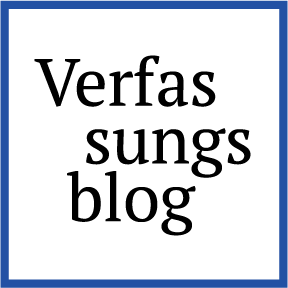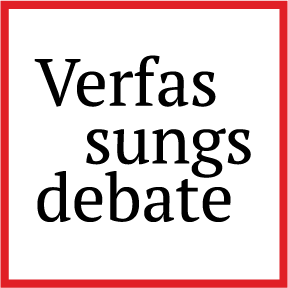A Wolf’s Right to the Surface of the Earth
The EU Habitats Directive, Animal Politics, and Kant
The European Union recently changed the legal status of the wolf from “strictly protected” to “protected”. In this contribution, I advocate a different response to the problem that wolves prey on animals kept by humans: the further development of the European ecological network called Natura 2000. The premise of my argument, based on animal rights theory and Kant’s philosophy of law, is that wolves have the right to be on Earth. In the past, humans have tried to eradicate wolves, which is a clear violation of this right. I argue that this historical injustice generates the duty to restore the habitats and natural infrastructure used by wolves, so that wolves can find natural prey and need not turn to livestock.
The protection status of the wolf
The EU has lowered the protection status of the wolf in response to wolf attacks on livestock. The EU and its Member States are party to the Convention on the conversation of European wildlife and natural habitats or Bern Convention that entered into force in 1982. This convention introduces a distinction between animals that are “strictly protected” (Appendix II of the convention) and “protected” (Appendix III). According to Art. 6 of the convention, the contracting parties have to “prohibit all forms of deliberate capture and keeping and deliberate killing” of “strictly protected fauna species”. Exceptions are allowed if these are not “detrimental to the survival of the population concerned” and if this is the only way “to prevent serious damage to […] livestock” (Art. 9), for example. Populations of animals on the “protected”-list should be “maintained” or brought up to “a level which corresponds in particular to ecological, scientific and cultural requirements, while taking account of economic and recreational requirements [..]” (Art. 2).
Council Directive 92/43/EEC of 21 May 1992, on the conservation of natural habitats and of wild fauna and flora, implements the Bern Convention. This Habitats Directive also has a list of animals “in need of strict protection” (Annex IV) and a list of animals “whose taking in the wild and exploitation may be subject to management measures” (Annex V).
On 27 September 2024, the EU submitted a proposal to the secretary of the Bern Convention to change the protection status of the wolf from “strictly protected” to “protected”. The reason advanced for this, is that the number of wolves in Europe – currently more than 20.000 – doubled in the last decade, which “led to increasing socio-economic challenges with regard to coexistence with human activities. This is due, in particular, to harm to livestock, which has reached significant levels.” On 6 December 2024, the Standing Committee of the Bern Convention adopted the EU proposal. The changed protection status of the wolf entered into force on 7 March 2025. On 8 April 2025, the European Parliament voted in favour of a change in the wolf’s protection status in the Habitats Directive, to align it again with the Bern Convention.
Animal rights theory
I want to criticize this response by the EU in light of insights developed in animal rights theory and especially one branch of it called “Animal Politics”.
Firstly, the rights of wolves, or animals in general, are not sufficiently protected by EU law. To begin with, the rights of animals are not recognized in the Charter of Fundamental Rights of the European Union. The “environment” referred to in Art. 37 EU Charter is that of humans. The Habitats Directive itself is also labeled as “anthropocentric” and “not fully ecocentric”. At most, this directive is viewed as granting animals “preliminary rights”, as the “by-product of human interest in biodiversity”.
Secondly, the EU simply assumes that humans have the authority to make decisions about the protection of animals. The branch of animal rights theory called “Animal Politics” or “Political Theory of Animal Rights” questions this authority. Animal Politics asks not only: “What rights should animals have?” but also: “Who gets to decide what rights animals should have?” And, more specifically: “Why do humans have the authority to decide what rights animals should have?” Who gave the European Union, a union of states (of humans) and citizens (humans), the authority to rule over societies of non-human animals? The premise of Animal Politics is that many animals are political beings in their own right, complete with unwritten rules and authority structures.
How to approach human-wolf interactions?
If we agree with Animal Politics about this, the key question becomes: “How should states of humans and states of animals interact with each other?” What models can we use to analyze and coordinate human-wolf interactions? There is a tendency in Animal Politics to use models and notions already developed for regulating the interaction between states of humans. Donaldson and Kymlicka, for example, approach the relation between humans and wild animals in terms of “wild animal sovereignty”.
The difficulty with this suggestion, however, is that the international law model does not seem to apply to the relations between states of humans and states of animals. The reason is that there are no borders between the territories of different species. Wolf territory is usually also deer territory. And humans tend to see all of the Earth’s surface as human territory. So, the world of wolves, the world of deer and the world of humans overlap. Within each of these worlds, the international law-model may make sense. Within the wolf world, for example, packs of wolves can be identified and rules may apply between such packs. But the issue here is how to adjudicate between the worlds of wolves, deer, humans, etc. How can or should all these worlds coexist on only one Earth?
The innate right to the surface of the earth
Here, I want to suggest, Kant may come to the rescue. In his theory of law, Kant ascribes to human beings the innate right to the surface of the Earth, “das Recht der Oberfläche”. Human beings have this right, he argues, because they are inhabitants of planet Earth. They are earthlings by nature and hence their rights to the surface of the Earth are innate. The right to the surface of the Earth is the right to occupy space on the surface of the Earth and move around on it. This right to the surface of the Earth of one person is limited by that of another. Your right to occupy space and move around is limited by the same rights of others. You have no right to force me off the space that I currently occupy. The rights to the surface of the Earth of human beings are mutually limiting.
My position is that we should ascribe also to animals – and to plants – this right to the surface of the Earth, since it is also their nature to live on this planet. So, this right should also be seen as innate in animals and plants. The implication is that the rights of humans to the surface of the Earth are limited also by the rights of animals and plants to the surface of the Earth.
To be clear, the right to the surface of the Earth is not the right to live. Wolves eat deer and deer eat plants. This natural behavior is not contrary to the rights to the surface of the Earth of animals and plants. Wolves do not want to remove deer from the face of the Earth. Human beings, on the contrary, have attempted to “wipe wolves off” the North-American continent and have persecuted wolves in Europe.
In general, human beings have taken more and more space on the Earth’s surface for themselves, at the cost of space for animals and plants. In terms of the right to the surface of the Earth: we humans have not let the rights to the surface of the Earth of these other living creatures limit our rights to the surface of the Earth. If we accept that our rights to the surface of the Earth are limited by the rights to the surface of the Earth of these other species, then we recognize the historical injustice committed by us, and we understand that this injustice generates the obligation to restore as much as possible the naturalness of the planet and so to make room again for other species.
Extending the EU’s Natura 2000 network
My proposal is that the mutually limiting rights to the surface of the Earth of human beings, animals and plants can serve as a proper background from which to address the issue how humans should respond to encounters with wolves.
As indicated at the beginning, the EU’s answer has been to lower the wolf’s protection status. The protection of animal and plant species is laid down in Articles 12-16 of the Habitats Directive. Animal Politics, with Kant’s right to the surface of the Earth extended to animals and plants added to it, can affirm the measures to restore and further improve the Natura 2000 network, an objective that is specified in Articles 3-11 of this directive. The reason is that the rights to the surface of the Earth of animals and plants can be seen as underlying and deepening the duty to “restore” and “maintain” natural habitats (preamble of the directive) because these rights trigger the duty to give back the space we took from them. This is in line with Animal Politics, since it presupposes a horizontal relation between humans, animals and plants, all viewed as bearers of the same innate right. The EU acknowledges in the preamble that “natural habitats are continuing to deteriorate and [that] an increasing number of wild species are seriously threatened”. In light of the right to the surface of the Earth of animals, a crucial duty is to restore and maintain not just habitats for species but entire “networks” (Art. 3) of habitats, which should be ecologically coherent (Art. 10). Making room for this natural network requires EU Member States to “manage” those “features of the landscape which are of major importance for wild fauna and flora”, especially for the “migration, dispersal and genetic exchange of wild species”, such as “rivers” and “stepping stones” (Art. 10). Wildlife bridges are an important example: they help animals cross human roads and railways. Human infrastructure fragments animal habitats and blocks the natural infrastructure animals use.
Extending and strengthening the Natura 2000 network is also a powerful response, I suggest, to wolf attacks on livestock, particularly sheep. The sheep that are bred and held by humans lack the means of self-defense that wild sheep have. Wild sheep have horns and live high up in the mountains, where predators have difficulty tracking them down. Unprotected domesticated sheep are easy prey for wolves, to which they turn when there is not enough natural prey for them. By expanding the Natura 2000 network, more space is returned to plants and animals, including animals preyed on by wolves. This solution to the problem fulfills our duty to give back to animals and plants what we took from them, contrary to their rights to the surface of the Earth.
FOCUS is a project which aims to raise public awareness of the EU Charter of Fundamental Rights, its value, and the capacity of key stakeholders for its broader application. Views and opinions expressed are however those of the author(s) only and do not necessarily reflect those of the European Union or the European Commission. Neither the European Union nor the European Commission can be held responsible for them.





